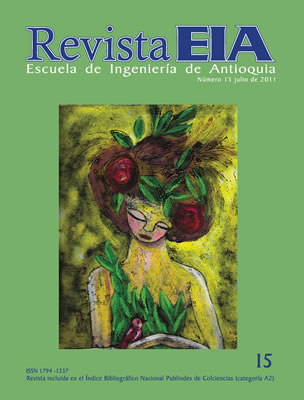DEVELOPMENT OF A CNC MICRO-LATHE FOR BONE MICROIMPLANTS (DESARROLLO DE UN MICROTORNO CNC PARA MICROIMPLANTES DE HUESO)
DEVELOPMENT OF A CNC MICRO-LATHE FOR BONE MICROIMPLANTS (DESARROLLO DE UN MICROTORNO CNC PARA MICROIMPLANTES DE HUESO)


This work is licensed under a Creative Commons Attribution-NonCommercial-NoDerivatives 4.0 International License.
Copyright statement
The authors exclusively assign to the Universidad EIA, with the power to assign to third parties, all the exploitation rights that derive from the works that are accepted for publication in the Revista EIA, as well as in any product derived from it and, in in particular, those of reproduction, distribution, public communication (including interactive making available) and transformation (including adaptation, modification and, where appropriate, translation), for all types of exploitation (by way of example and not limitation : in paper, electronic, online, computer or audiovisual format, as well as in any other format, even for promotional or advertising purposes and / or for the production of derivative products), for a worldwide territorial scope and for the entire duration of the rights provided for in the current published text of the Intellectual Property Law. This assignment will be made by the authors without the right to any type of remuneration or compensation.
Consequently, the author may not publish or disseminate the works that are selected for publication in the Revista EIA, neither totally nor partially, nor authorize their publication to third parties, without the prior express authorization, requested and granted in writing, from the Univeridad EIA.
Show authors biography
This paper evaluates the development of a CNC micro-lathe concept, continuing with the research in the development of machine tool prototypes by LATEMM. A micromachining center developed in 2004-2005 at Universidad de los Andes was studied, and based on the results obtained, a new prototype was proposed. The motivation behind the design and construction of this machine tool was to achieve higher precision in the machining process compared with conventional turning produced in macro machine tools. A machine, with spindle rotation speed up to 300 000 rpm was achieved, the cutting tool moves in two axes through step motors connected to worm gear reductions, thus resolution of 1µm is achieved. The interpolator was programmed based on DDA integration. The machine was set under a stereoscope to visualize the machining operations with zoom up to 30X. Micromachining was reached adopting NC control and it was possible to characterize micro-turned cortical bone samples
Resumen: Este artículo evalúa el desarrollo de un concepto de microtorno CNC, siguiendo la línea de investigación en el desarrollo de prototipos de máquinas-herramientas por parte del LATEMM. Se estudió un centro de micromecanizado desarrollado en 2004-2005 en la Universidad de los Andes y con base en los resultados obtenidos se propuso un nuevo prototipo. La motivación detrás del diseño y la construcción de esta micromáquina herramienta era alcanzar mayor precisión en el mecanizado en comparación con el torneado convencional producido en máquinas-herramientas de tamaño macro. Se logró una máquina que alcanzó una velocidad de rotación de hasta 300.000 rpm en el husillo, la herramienta de corte se mueve en dos ejes a través de motores de paso conectados a sistemas de reducción sinfín-corona con lo que se logra una resolución de 1µm, además se programó interpolación basada en integración DDA. La máquina fue montada bajo un estereoscopio para visualizar las operaciones de maquinado con una ampliación de hasta 30X. Se produjo micromecanizado adoptando control NC y fue posible caracterizar muestras microtorneadas de hueso cortical.
Article visits 251 | PDF visits 139
